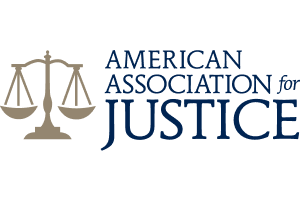Construction Falls
Construction Falls – Roofs, Edges, and Floors
Falls off roofs, edges, or through floors are common causes of serious injuries and deaths on construction sites in the state of Washington. When an injury occurs, an injured worker or the worker’s family may be able to recover compensation for personal injury or death caused or contributed to by a third-party, including general contractors, in some cases landowners, or other persons responsible for oversight of the worksite. Because of the complex nature of these fact patterns, it is important to consult with an experienced construction personal injury lawyer if you or a family member sustained a fall on a construction site.
In Washington, construction site safety rules require the use of fall protection systems under circumstances when workers are exposed to certain fall risks. Three different types of restraint systems are authorized by the safety regulations. First, restraint systems that prevent a fall from occurring; second, arrest systems that stop a person after falling; and third, positioning device systems or leading edge systems that keep a person in a certain position and stops the person within two feet of the hazard. Depending on the circumstances that exist, fall protection may be required at four-feet, six-feet, ten-feet, or twenty-five feet.
The Four-Foot Rule. Whenever a worker is going to encounter open-sided floors, platforms, runways, or wall openings and is exposed to a risk of falling more than four feet, a fall restraint system is required. WAC 296-155-505(6)(a). Other common examples when a four-foot rule applies include trenching and excavation work where guardrails are required on walkways that are four or more feet above lower levels. WAC 296-155-655(12)(a).
The Six-Foot Rule. Workers engaged in doing concrete or masonry operations must use a personal fall arrest system, safety net system, or positioning device system when working six feet or more above any adjacent working surface. WAC 296-155-680(10)(b).
The Ten-Foot Rule. Employees engaged in leading edge work and general roofing work must be protected by fall restraint, fall arrest systems or positioning device systems when they are exposed to a fall of 10 feet or more from height. WAC 296-155-24510. In certain instances, warning lines and safety monitoring systems are allowed in lieu of personal fall protection systems. See WAC 296-155-24515, 24520, 24521.
The Twenty-Five Foot Rule. When working on a ladder over 25 feet and doing work with both hands, or wearing eye protection or a respirator, a worker must use a safety belt and lanyard secured to the ladder. WAC 296-876-40040.
Falls Through Skylights, Roof Openings or Floor Openings. Employees must be protected from falls through any skylights, roof openings or floor openings by installing either a standard guardrail system along all exposed sides or a cover that is marked, secured and is capable of supporting at least 200 pounds.
Falls from Elevated Platforms or Aerial Lifts. Workers using elevated work platforms such as aerial lifts must use a safety harness and lanyard device fixed to attachment points provided and approved by the manufacturer of the aerial lift or other elevated work platform. WAC 296-869-20045.
Falls at Construction Sites: Hire Experienced Washington State Attorneys Who Know the LawMost Job-Related Falls are Preventable
Construction workers know that most job-related falls are preventable. Yet, according to national statistics compiled by the U.S. Department of Labor, approximately 350 construction workers die every year from unprotected falls. These fall-related fatalities represent 40 % of all construction-related deaths. Thousands more are injured in unprotected falls each and every year. If you or a loved one has been injured in a fall at a construction site, it is likely that a government safety regulation was violated. The Washington Industrial Safety and Health Act [WISHA] has comprehensive fall protection safety standards that all contractors are required to follow. When a contractor negligently fails to follow or enforce WISHA safety rules, the injured construction worker may have a third party claim against the negligent contractor.
Failure to Follow Safety Regulations is the Number one Cause of Falls
Failure to follow government safety regulations related to fall protection is the number one safety violation for which construction contractors are cited each and every year, according to the U.S. Department of Labor. The following are a just few of the most important construction site safety rules that are supposed to prevent injury and death from falls:
- At construction sites all floor openings and wall openings are to be covered or guarded at all times;
- At construction sites all ladders are to be in good repair and secured to prevent movement;
- At construction sites all scaffolding components are to be tightly fastened together and all openings are to be protected by railings; and
- At construction sites all workers who must otherwise be exposed to an unprotected fall hazard of 10 feet or more must be provided with and required to wear a safety harness and line, and the line must be firmly tied off to an anchor point so that any inadvertent fall is arrested.
Construction Contractors Who Violate the Safety Laws Should be Held Accountable
Falls often cause crippling injuries, wage loss, and pain that workers’ compensation benefits paid by the Department of Labor and Industries do not even begin to cover. Just as construction workers are supposed to follow the rules and do a good job, the contractors are supposed to follow the safety rules and do a good job of enforcing those rules. Likewise, construction injury lawyers need to know the safety rules and do a good job of making sure that those who ignored the safety rules and caused a devastating fall injury are held accountable to the injured worker.
Not all Lawyers are Equal When it Comes to Construction Personal Injury Law
The attorneys at Kraft Davies Olsson PLLC don’t need on the job training. We know how to build a strong case. When your rights are at stake, you should hire a journeyman and not an apprentice, since you will be paying the same contingent fee to any personal injury lawyer you hire, whether experienced or not. At Kraft Davies Olsson PLLC we know how to properly investigate and aggressively litigate fall injury claims to maximize the financial recoveries that our injured construction worker clients need.
Over the decades that we have practiced law together, the attorneys at Kraft Davies Olsson PLLC have successfully won large settlements and verdicts for construction workers who were injured in falls in from or through the following:
- Roofs;
- Scaffolding;
- Ladders;
- Floor openings;
- Wall openings; and
- Open walkways and platforms without railings
Our Law Firm Handles Cases in Seattle and all Over the State of Washington
We are a Seattle-based law firm, but we represent injured workers from all over the state, in every county and federal court in Washington. If you hire Kraft Davies Olsson PLLC, you will pay us no fee unless we win financial compensation for you!
Call Now for a Free, No Obligation Consultation With an Experienced Lawyer
If a company or contractor responsible for oversight of a job site fails to enforce these minimum fall protection safety standards for workers on its job site, it can be held liable for the worker’s injury or death. Our firm offers a free case evaluation to consider the specific facts of your case so that you can decide if you have a valid claim. For a free, no obligation consultation, call Kraft Davies Olsson PLLC today at 206.624.8844. Alternatively, you may email your inquiry to us by clicking here.







